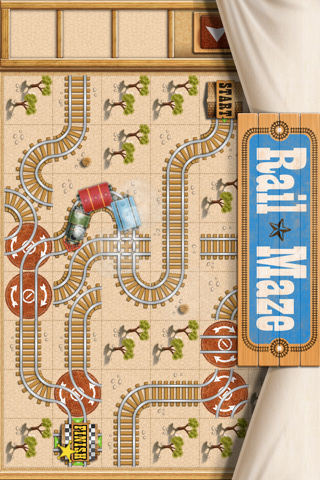
While the unworn Amtrak-Standard wheel makes very little contact with the gauge corner of worn rail, because of its strong two-point contact it encounters frequent gauge-face contact with the outside rails in curves on the corridor. This evaluation determined that the frictional work at the flange root of the new wheel profile design is about half of what it is on the Amtrak-Standard wheel-profile design.
Rail maze 1 20.northeast full#
Thirty-six thousand curving simulations were run for each profile to determine the distribution of the frictional work (which is generally accepted as a good proxy for wear) experienced as the train runs the full length of the NEC mainline from Washington to Boston. and imported into the SED database.Ī comparison of the wear performance of the unworn Amtrak-Standard wheel, which measured profiles at three stages of wear, and the new CSTT-designed wheel profile was performed using CSTT’s pummelling software. A speed and braking torque profile for an Acela train was provided by ENSCO, Inc. Measured rail profiles, collected at 4 1/2-foot intervals across most of the NEC by Advanced Rail Management under subcontract to the FRA, were also employed in the analysis. The information generated by the Pummeling Analysis provides a practical method for identifying the position and severity of the wheel/rail contacts and determining the longitudinal creepage, rolling radius difference and contact stress associated with each.ĬSTT worked with Amtrak’s comprehensive Sharable, Expandable Database (SED) to understand track conditions on the corridor (see sidebar Monitoring Vehicle/Track Interaction on Amtrak’s NEC.) Track geometry data in the SED, which is updated about every two weeks, includes data on the track gauge, curvature and superelevation for any point on the track between Boston and Washington. Information on the vehicle’s weight, axle load, speed and truck characteristics, along with track parameters such as gauge, curvature and super-elevation, are used to model the wheel/rail interaction. The contact distribution was evaluated through a computer model that superimposes a set of measured wheel profiles on a given pair of rail profiles and performs a quasi-static curving balance. This examination enabled researchers to assess the damage contributed by all of the wheels-new wheels, worn wheels, leading axles, trailing axles, heavy axle loads, light axle loads - passing a specific section of track. To obtain a system-wide story, engineers from the National Research Council of Canada’s Centre for Surface Transportation Technology (CSTT) performed a Pummeling Analysis - a look at the distribution of wheel-to-rail contacts across the system - to characterize how a wheel or section of rail is shaped by wheel/rail interaction, and to validate the performance of custom-designed profiles. While wheel/rail performance can be characterized by randomly sampling wheels and rails on a system, each wheel and each section of rail tells only one story. Also of concern are hollow-wheels with a false flange condition that impairs wheelset steering and damages the low rail in curves. Among the considerations are the unfavorable wheel wear patterns on the conventional fleet, which include a geometrical stress raiser that develops between adjacent running bands on the wheel and leads to high stresses on the wheels and the rail (see Figure 1).

High rates of wheel flange wear on the high-speed Acela trains may have been the catalyst for the investigation, but the study also considered the conventional Amfleet cars and the 16 other commuter and freight railroads that operate over the same track on the corridor.


 0 kommentar(er)
0 kommentar(er)
